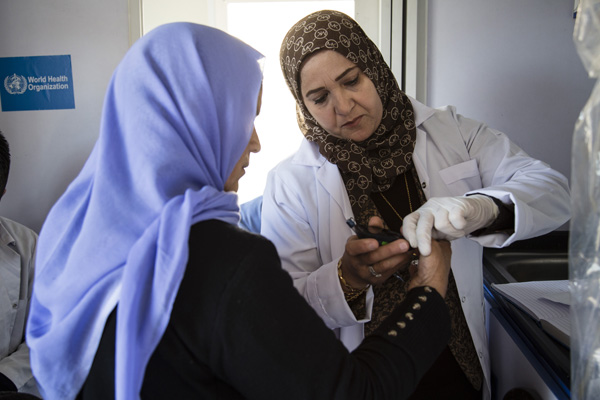The World Health Organization (WHO) provides technical and logistical support to the Ministry to control many communicable diseases, including tuberculosis (TB), hepatitis, HIV/AIDS and neglected tropical diseases, and to tackle antimicrobial resistance, collect communicable disease surveillance data and help ensure adequate response to outbreaks.
Support focuses mainly on capacity-building, integrating responses at central and governorate levels, and developing technical guidance and guidelines. WHO also supports the Ministry’s analysis of data to evaluate the impact of interventions to control common communicable diseases and improve surveillance.
Tuberculosis
Hepatitis
HIV/AIDS
Malaria
Antimicrobial resistance
Neglected tropical diseases
The Ministry of Health has developed an integrated vector management and control plan to strengthen prevention and control of neglected tropical diseases in the country, the most prevalent of which are leishmaniasis, soil-transmitted helminthiasis and rabies.
Surveillance
Public health surveillance provides national health authorities with accurate and timely data to facilitate the prevention and control of disease outbreaks and ensure an adequate response to any public health incident. To build the capacity of the communicable disease surveillance programme, WHO has trained 52 health workers from different health districts in the use of electronic surveillance software to generate reports and monitor trends.





